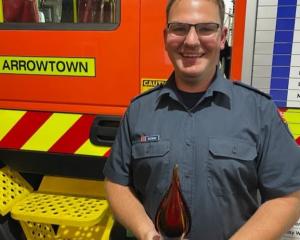The Wanaka Warbirds and Wheels Museum has obtained the loan of what is believed to be the only Rickenbacker car outside the United States.
More than 20,000 Rickenbackers were made in the 1920s over a period of seven years but only 101 remain.
One of the features of the 1924 Model C, 58 horsepower, six-cylinder version at the museum is that it has brakes on all four wheels - Rickenbacker was the first to apply such technology to mid-priced vehicles.
The right-hand-drive car was imported new to Oxford, Canterbury, by Harland Garbutt and is still in original condition, apart from its radiator core, running boards, pistons and driveshaft.
It still has its original seats, stuffed with horse-hair, floorboards, wooden framing, wiring, door plates, instruments, lights, bumpers, differential, clutch, gearbox and engine.
Edward Rickenbacker was born in Columbus, Ohio in 1890 to Swiss parents, and became known as ''Fast Eddie'', racing four times in the Indianapolis 500 before World War I.
He went on to become America's top fighter pilot in World War 1, with 26 aerial victories - 22 aircraft and four balloons - as part of the 94th aero pursuit squadron, famously known as the ''hat in the ring'' squadron.
Mr Rickenbacker described aerial warfare as ''actually scientific murder'' and he came close to death many times; 135 times by his own count.
The Rickenbacker Motor Company started up in 1920 in a factory in Detroit, and made its debut at the New York auto show in 1922.
The ''hat in the ring'' became the company's official emblem.
Mr Rickenbacker announced in 1923 the company's cars would have brakes on all four wheels.
However, Ford and Studebaker, which offered cars with brakes on only two wheels, led a campaign against the innovation, describing it as dangerous.
That and other issues clipped the company's wings and although its 1926 model could carry four people at just under 100mph (160kmh), production ceased in 1927.
Mr Rickenbacker died in Switzerland in 1973.
The car on loan to the museum is owned by Emma Aitken, of Christchurch, who inherited it from her late father, Ted Aitken.
Museum director Robert Duncan described Rickenbacker as a ''fearless racing car driver'' who produced ''quite a classy car''.
The price in its day was equivalent to nine Fords.












